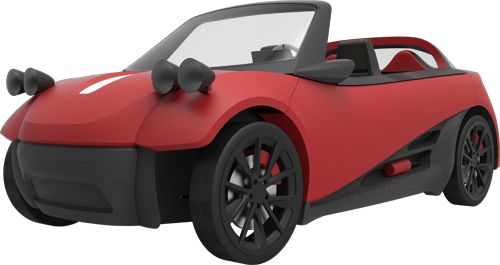The term disruptive technology is overused and often can’t be justified. But in the case of additive manufacturing, it truly applies. This technology now makes complexity free, ushering a new age of manufacturing that allows designers to no longer be constrained by manufacturing methods.
The basis of additive manufacturing is 3D printing, which delivers many advantages to manufacturing, not the least of which is the freedom it delivers to the design process combined with higher quality of the final product.
Design for Manufacturing is History
For centuries designers always have had to make their output conform to the manufacturing process, breaking up a complex assembly into components that could be actually manufactured. Often this process requires simplifying the assembly, potentially requiring compromises to the overall solution. And once the assembly has been broken up into component parts; the molds and tooling to manufacture the parts had to be designed.
Because additive manufacturing means an end to molds and most tooling, building prototypes is no more expensive to produce than the production model. This fact means freedom — freedom for the designer to fully explore the design space, building a range of solutions that can be tested in the real world. Computer simulation can only go so far in providing data. Imagine a world where an engine designer can track test various manifold designs easily. Enter the world of design-driven manufacturing.
Complexity is Free
Additive manufacturing brings in an age of where complexity is practically free. A complex object is just as easy to print as a simple one. In other words, because there are no molds and castings that place (often severe) limits on what can be built — the only constraint is what the designer can imagine.
When complexity becomes free, the ability to design the best solution is enhanced. Solutions there were impossible to build in the past are now cheap and easy.
Bespoke Manufacturing
Because complexity in now free and molds are no longer needed, the cost of producing one of something is nearly the same as 1,000. This fact opens the door to bespoke manufacturing where custom versions of products are easy to produce. Gone is the concept of high-cost short runs and setup charges.
For example, this concept can apply to the medical device industry where items from artificial hips to complex dental implants can be easily created, just made to order. A day could soon arrive where a hospital can take measurements of a patient, send the data to device manufacturer who updates a 3D model and transfers the new model to manufacturing facility to print out a hip joint, for example, out locally. A hospital would no longer need to order and stock a range of devices to keep on the shelves.
But bespoke manufacturing is coming to consumer products. Local Motors is now printing cars, yes, cars. The concept is that the body is 3D printed using a composite of ABS plastic and carbon fiber, with the rest of the car built on a standard platform in order to meet safety requirements. The first car took just over two months from design ready to prototype. Soon consumers will be able to control the look of their car and modify major design parameters to achieve a custom fit.

Local Motor's LM3D 3D-Printed Car (Render Courtesy of Local Motors)
Higher Quality
Because additive manufacturing goes hand in hand with 3D modeling, the need for manufacturing drawings is eliminated. The model becomes the specification, resulting in higher quality as the original design specifications do not need to be translated to drawings and then converted to molds, tooling and machining routines.
Product quality is improved in two ways:
- With the elimination of molds, gone are alignment issues and mold marks, or the drift of dimensions due to mold wear — the 1,000th unit is identical to the first.
- Factory-to-factory variation is eliminated, as all are working from the same 3D model. Differences in tooling and manufacturing experience play no role
Moreover, the number of manufacturing steps is reduced, which not only reduces the cost, but decreases the chance for errors in the process.
What Does This Mean for Software Suppliers
This revolution in manufacturing, with its improved capabilities to realize complex designs, requires that the software used is cognizant of additive manufacturing workflows and purpose built to support those requirements. Designing, editing, healing, and orienting a 3D model for printing are critical steps, and with increasing production volumes and complexity, maintaining high quality through automation is paramount. Effective solutions will handle all aspects of this workflow and allow for seamless translation from precise and polygonal models to the printer’s machine code, and ultimately the final product.
Additive manufacturing is already playing a greater role in the aerospace and medical industries and moving into other low-volume manufacturing where quality and precision are paramount. But higher volume additive manufacturing is coming, allow for bespoke manufacturing even for consumers, ushering in a fourth industrial revolution. Those who adapt will thrive.







.jpg?width=450&name=Application%20Lifecycle%20Management%20(1).jpg)






